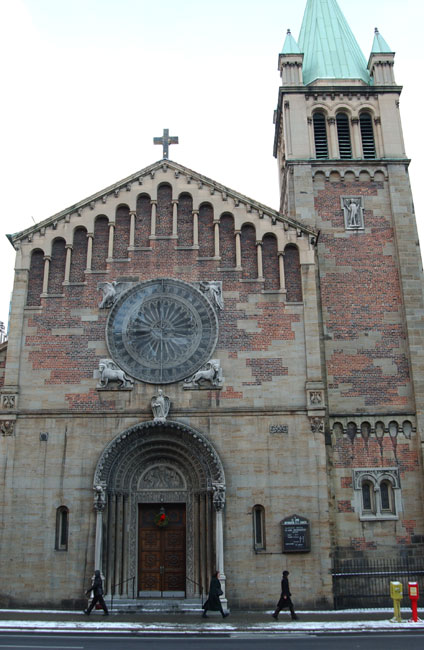I read Summery.org and I get jealous (I mean man, who is this woman?). Posts like this one and this one especially. It must be amazing to live somewhere where you can walk into a building that’s 500, or a 1000, or sometimes 2000 (0r more!) years old – to have such ready access to the relics and reminders of these whole other ways of being human that once existed on the earth. And what relics! I mean, how do you top them? I’ve sometimes wondered that about the Europeans of today – do they feel in some inherent sense that they’re simply living amongst the remnants of their golden age? Like they have to face daily the physical artifacts of what must have been the high point of their culture? I mean, don’t get me wrong, despite what I might sometimes think I wouldn’t have really wanted to live back then myself, what with the plagues and the torture and the warfare, the public executions and the lack of toilet paper. Still, to be able to wander amongst those relics in some kind of hazy dream of antiquity would be nice.
Here in New York the closest we can get to that is approximations and replicas – though some of them can do the trick, in a pinch. The St. John Nepomucene Church has struck me as a decent one of late. Their church building on First Avenue and 66th Street is the parish’s third since its founding in 1895, though it was the first one on this location; the parish started in a building on East 4th Street and then moved to East 57th Street before landing here. Despite its appearance this church wasn’t built until 1925 – though again I guess you wouldn’t have thought that it’s been here since the 700s. That’s kind of the look it has right? It was modeled on the Sicilian Romanesque style (hey I just remembered that I wrote about the Romanesque style once in my oft recalled yet long forgotten youth). Those lions kind of remind me of Venice too – back before people knew what lions really looked like. The church itself is actually a Roman Catholic Slovak congregation but clearly the architect – John V. Van Pelt by the way – chose not to go that architectural route…though to be honest I’m not sure what a Roman Catholic Slovak architectural route would actually look like anyway.
Though the Nepomucene in the church’s name refers to its Slovakian heritage, so they’ve got that going at least. It’s in honor of Saint John of Nepomuk – not to be confused with Saint John the Apostle (also known as Saint John the Evangelist, and the only apostle by the way not to die a martyr’s death) or Saint John the Baptist (he had his head cut off by King Herod) or Saint John Fisher (also beheaded, by King Henry VIII) or Saint John Houghton (drawn and quartered) or any of the other maybe 75 or so Saint Johns – no this was the one who died by being thrown into the Vltava river. He was thrown into the Vltava River, the story goes, by King Wenceslaus because John of Nepomuk – the confessor of the Queen of Bohemia, King Wenceslaus’ wife – refused to divulge the secrets of her confession. So yeah. You know that Christmas carol “Good King Wenceslaus”? Well that fucker threw this guy into the river!
Or actually not – the Wenceslaus of Christmas cheer was Wenceslaus I, Duke of Bohemia, supposedly assassinated by his brother Boleslav the Cruel (no relation to Vigo the Carpathian) in 935 and elevated to sainthood sometime later; he was also posthumously named a king and is seen today as the patron saint of the Czech state. The Wenceslaus who drowned Saint John of Nepomuk in the river was King Wenceslaus IV, a member of the House of Luxembourg and King of Bohemia (by inheritance) as well as the German King (by election – by a bunch of princes, not the common people) and ruling under the name King of the Romans, which I believe means he was a Holy Roman Emperor – ruling from Prague. All of which just goes to show that the world back then really didn’t make much sense. But I don’t know, does it make much more sense now? I’m writing this on a magical machine that I don’t understand at all – that will somehow allow these words to appear on a screen wherever in the world you might be sitting as long as it has something called an internet connection. I don’t know; we don’t make buildings the way they did back then, I’ll give em that. Although there’s little threat I might be drawn and quartered for anything that I might do or say or simply think – or even be thrown into a river for it. That’s kind of nice. I’m sipping on an iced coffee. I don’t believe in Jesus.




